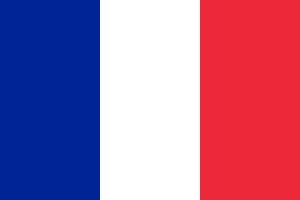Language/French/Grammar/Masculine-and-feminine-forms-of-adjectives
Adjectives in French must agree in gender and number with the noun they modify. This means that if the noun is masculine singular, the adjective must be masculine singular, and if the noun is feminine singular, the adjective must be feminine singular. In this lesson, we will explore how to form the masculine and feminine forms of adjectives in French.
Masculine Forms of Adjectives[edit | edit source]
Most adjectives in French have a basic form that is masculine singular. To form the masculine plural, an -s is added to the end of the adjective. For example:
- Grand (masculine singular) -> Grands (masculine plural)
- Beau (masculine singular) -> Beaux (masculine plural)
Feminine Forms of Adjectives[edit | edit source]
To form the feminine singular form of adjectives, an -e is usually added to the end of the masculine singular form. For example:
- Grand (masculine singular) -> Grande (feminine singular)
However, some adjectives have a different form for the feminine singular, and these must be memorized. For example:
- Blanc (masculine singular) -> Blanche (feminine singular)
- Nouveau (masculine singular) -> Nouvelle (feminine singular)
- Beau (masculine singular) -> Belle (feminine singular)
Masculine and Feminine Forms of Adjectives Ending in -e[edit | edit source]
Adjectives that end in -e in the masculine singular form do not change in the feminine singular form. For example:
- Énorme (masculine singular) -> Énorme (feminine singular)
- Rare (masculine singular) -> Rare (feminine singular)
Masculine and Feminine Forms of Adjectives Ending in a Consonant[edit | edit source]
Adjectives that end in a consonant in the masculine singular form add an -e to form the feminine singular form. For example:
- Petit (masculine singular) -> Petite (feminine singular)
- Blanc (masculine singular) -> Blanche (feminine singular)
Conclusion[edit | edit source]
Forming the masculine and feminine forms of adjectives in French is an essential part of mastering French grammar. By understanding the rules for forming these forms, you can improve your French language skills and communicate more effectively with native speakers.
Videos[edit | edit source]
Feminine and Masculine French adjectives - YouTube[edit | edit source]
French adjectives Rules: Masculine - Feminine - YouTube[edit | edit source]
French Adjectives - Grammar - Rules - Feminine Masculine - YouTube[edit | edit source]
French Possessive Adjectives (Masculine Singular) - YouTube[edit | edit source]
Other Lessons[edit | edit source]
- Transitive and Intransitive Verbs
- Compound nouns
- Summary table of subject pronouns
- Subject verb agreement when subject quantifiers are present
- How to Use Have
- Masculine and feminine forms of adjectives — A change in written and spoken French
- How to Use be
- Impersonal subject restricted to il
- Pronouns
- Omission of plural indefinite des after the preposition de

